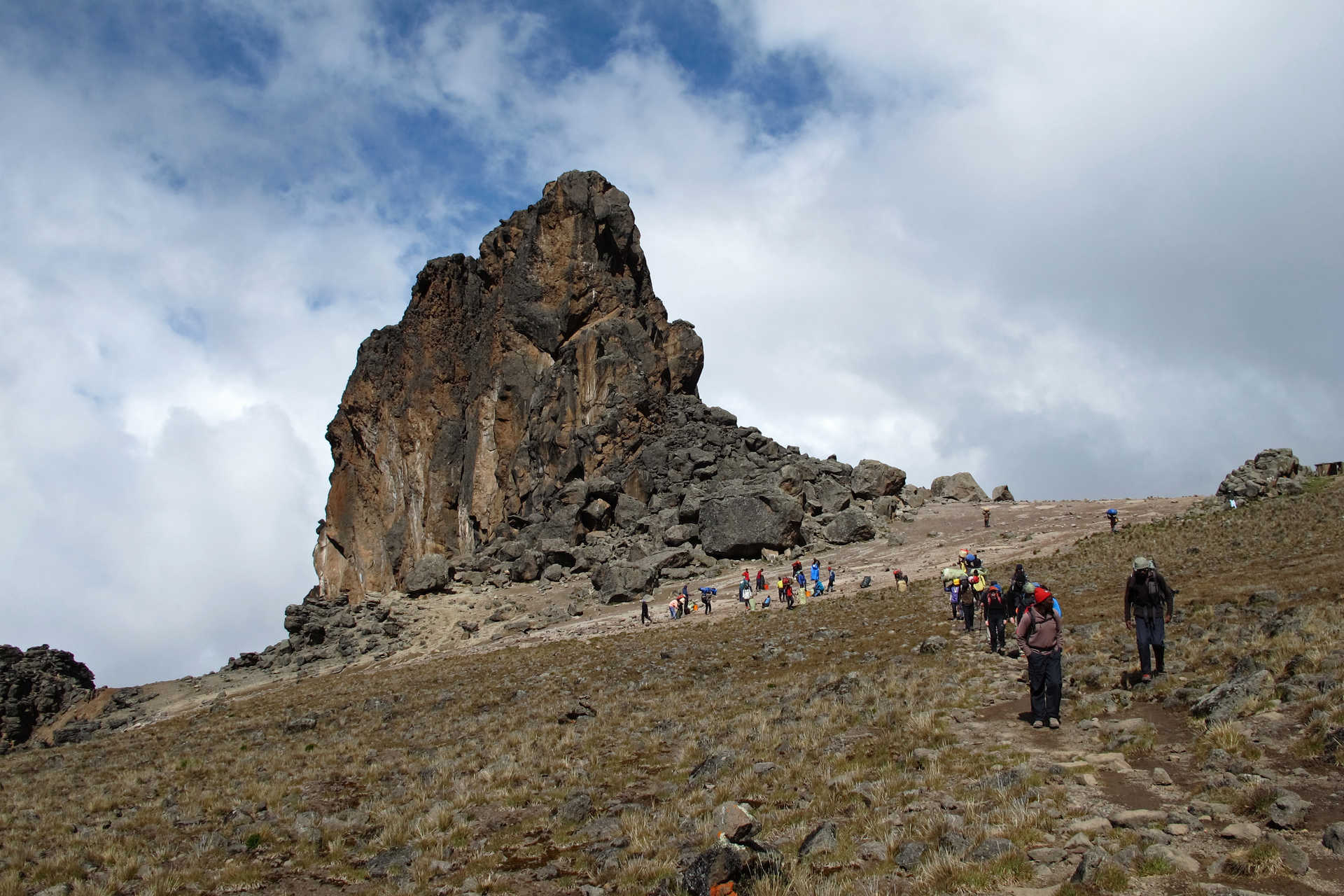Mount Kilimanjaro Routes
You’ve risen to the challenge. You’ve decided to climb
Africa’s highest and most iconic peak, Mount Kilimanjaro. The question you now
face is “which is the best route to climb Kilimanjaro”?
This imposing volcano, set within Tanzania’s beautiful Kilimanjaro
National Park, offers more than 7 different routes to the summit. This
means that, provided you’re suitably fit and are happy to take the time to
acclimatise to high altitudes (Kilimanjaro’s highest point lies 5,895 metres
above sea level) there’s a Kilimanjaro route to suit you whether you’re a
novice trekker or a seasoned mountain-bagger. No matter what trekking
experience you have under your belt, and which summits you’ve bagged before, all
our clients that have climbed Kilimanjaro come away with a magical feeling of
having had a stellar trekking experience, wrapped in a warm Kandoo bubble of
support. The Kandoo team themselves have all climbed Kilimanjaro, on a variety
of different routes, and collectively we have climbed a fair few mountains, but
we all agree that there is something unique about the journey to the summit of
Mount Kilimanjaro, Uhuru Peak. It may be that Tanzania factor; it might be this
unusual free-standing mountain herself; it could be the hospitality of the
Kandoo support team; it is quite possibly all three. There is no denying that
this is an experience like no other and one not to be missed, so consider your
Kilimanjaro trip carefully.
Whether you’re attempting the mountain for personal
fulfilment, a charitable cause or simply ‘because it’s there’, the Kilimanjaro
route by which you make your way to the summit will define this unique and
magical experience for you. We have our favourite routes up Kilimanjaro, and
you might be able to tell in how we describe the different route options, but we’ll
do our best to be objective so read till the end and we’ll give our
recommendations to help you decide which is the best for you. In a nutshell, how
long it takes to climb Kilimanjaro is ultimately determined by which route
you choose.

Kilimanjaro Trekking Routes
ACCLIMATISATION
The number one reason why people struggle to summit
Kilimanjaro is altitude sickness and unfortunately there is no quick fix for
preventing it. There are several ways to manage it though. You can try and
spend time at altitude when you’re training for your Kilimanjaro climb although
this isn’t always possible, depending on where you live. The more used to
altitude your body becomes, the better you will cope with climbing Kilimanjaro.
You can take preventative medicines to relieve the symptoms
such as Diamox, although we recommend always seeking medical advice before
taking it as there are side effects that can be uncomfortable such as light
sensitivity and tingling in your limbs. It is worth noting that these
medications won’t stop altitude sickness, though they might lessen the fatigue
and nausea that can come with spending time at high altitudes.
Finally, factoring in enough days for acclimatization
to high altitudes is essential and something Kandoo do on your behalf with
all our trips up Kilimanjaro. If you’re worried you might struggle with
altitude sickness, then opt for a longer trip duration to allow plenty of time
for your body to adjust.
DIFFICULTY
All our Kilimanjaro climbs are rated a 4 out of 5 for
difficulty. These treks are achievable but by no means easy. Choose your
trekking route considering your fitness and ability. If you prepare for your
climb with cardio, trekking, strength training and a positive mental attitude
then you won’t have any issues reaching Uhuru Peak.
ACCOMMODATION
It is important to note that all Kilimanjaro routes except
one will require you to sleep in tents. Camping is not for everyone and if you
would rather not then the only route for you is the Marangu route. This route
makes use of permanent wooden huts along the trek to accommodate hikers. These
wooden structures have basic dining rooms and toilet facilities and usually
require you to sleep on wooden platforms in dormitory style rooms.
For those of you who are up for camping, Kandoo use
mountaineering tents made in the Himalayas to withstand all weathers and
subzero temperatures. With comfy sleeping mats and a super warm sleeping bag,
they are surprisingly cosy and will be put up for you by your support crew in
advance of you reaching your camp for the night.
Lastly, the route you choose to climb Kilimanjaro may be
determined by how much time you have available. If you’re flexible on dates and
want the full Kilimanjaro experience, then the Northern Circuit and Lemosho
routes are slightly longer and stunningly scenic. For those strapped for time
the Marangu route is shorter but still wholly enjoyable.
Here are our top 5 routes on Kilimanjaro.
1. The Lemosho Route, Kilimanjaro

Trek duration: 6-8 days
Trip duration: 10 days
Difficulty: Challenging
Kandoo summit success rating: Over 95%
Accommodation type: Camping
Best route for: stunning scenery - low
congestion - steady ascent - wildlife spotting
Starting at Lemosho Gate at the western base of Kilimanjaro,
the Lemosho route makes the top of our best 5 Kilimanjaro
routes because of its breathtaking beauty. Although this route can be completed
in just six days, it’s better to go for a seven or eight night trek as this
gives more time to acclimatise and rest, thereby increasing your chances of
successfully reaching Kilimanjaro summit, Uhuru Peak. This is the newest of the
routes of Kilimanjaro and has the most westerly starting point, offering a
longer, steadier ascent than shorter more direct paths, which is especially
good for those who haven’t climbed at altitude before.
The Lemosho route is more demanding than the Rongai route
(below), but the extra endeavour required is amply rewarded by Lemosho’s
outstanding scenery. It’s also less crowded with climbers than some of the more
established routes on Kilimanjaro.
The journey begins with a trek through verdant rainforest.
In this remote and unspoilt area, trekkers may glimpse antelope, elephants,
buffalo and other native wildlife. As height is attained, rainforest gradually
gives way to scrub vegetation and the vast open moorland of the Shira Plateau.
Heading northwards, the Lemosho route takes in one of Kilimanjaro’s most
notable landmarks, Lava Tower. This impressive monolith, more than 90 metres in
height, is a reminder of Kilimanjaro’s active volcanic past.
Beyond Lava Tower the Lemosho route descends into the cool,
Barranco Valley where flowering senecio and lobelia plants grow. This area
contributes to Lemosho’s reputation for natural beauty, but at its boundary
stands the daunting Barranco Wall which takes around ninety minutes – depending
upon your fitness and stamina – to clamber and scramble up. The effort is worth
it for the resulting views of the next part of the route, the barren Karanga
Valley below.
From the valley, the last part of the ascent to Uhuru Peak
is typically made over two days with a rest stop at the Barafu Camp, set on a
high rocky ridge, marking the beginning of the final push to Kilimanjaro summit
for an exhilarating sunrise finale.
Although this Kilimanjaro route features a number of
significant rises and descents, making it tougher than the more gradual ascent
offered by the Rongai route, the Lemosho route justifies its place in our top 5
routes to climb Kilimanjaro both for its lack of crowds and for its
unforgettably varied and wonderful scenery.
2. The Machame Route, Kilimanjaro
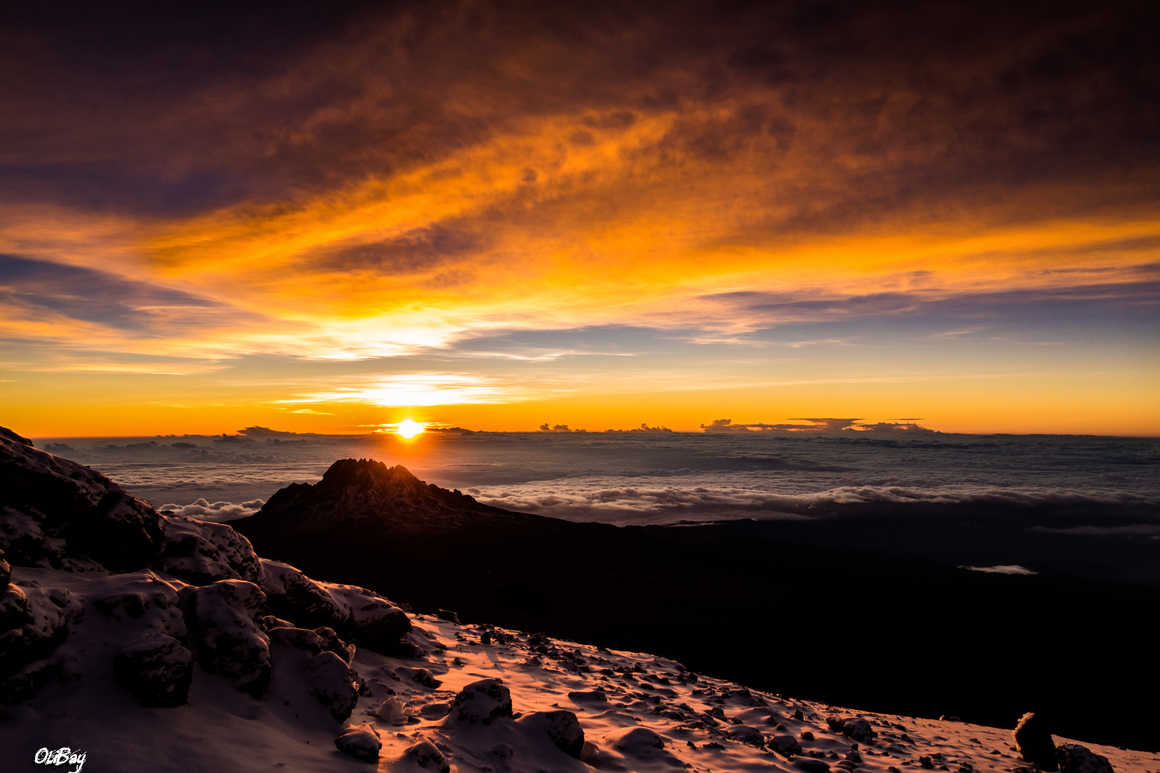
Trek duration: 6-7 days
Trip duration: 9 days
Difficulty: Challenging
Kandoo summit success rating: Over 95%
Accommodation type: Camping
Best route for: budget-friendly - scenic - shorter route
We make no apologies for including the most popular routes
on Kilimanjaro in our top 5. Popular means more crowded, and the Machame
route’s comparatively steep ups and downs also call for greater reserves of
stamina than either the Rongai or Lemosho route, but in other respects Machame
ticks all the right boxes.
Beginning on the southern side of Kilimanjaro, the Machame route is more accessible than those which
originate on the western or northern sides, making it a less expensive option
for the climber on a budget and offering a greater number of tour operators to
trek with. And whilst it presents more of a challenge, the Machame route is not
as long as others and can be completed in just six days by experienced
trekkers.
Another huge plus is the sheer diversity and natural beauty
of the terrain that the route takes in. Beginning in lush green rainforest,
trekkers will subsequently encounter heather-carpeted moorland, cross the
lobelia and senecio strewn Shira plateau and - as altitude is gained and plant
life gradually thins out – reach the rock lava slopes and ridges that lead to
Kilimanjaro’s summit. At every step of the journey, even in wet weather, the
Machame route provides a succession of unforgettable sights, vistas and
landmarks.
As with the Lemosho route, trekkers following the Machame
route will contend with Lava Tower and Barranco Wall before taking a path that
curves around a full half of the mountain. This section opens up yet more
spectacular panoramic views and leads the way to Barufu Camp and the winding
upward climb that ends with the ultimate prize: Uhuru Peak.
The Machame route’s popularity means that you’re likely to
be trekking in the company of many like-minded souls. Frankly, we think this is
a minor downside that is balanced out by a route that is budget-friendly,
easier to get to than others, and offers unrivalled scenery and a better than
average chance of summit success.
3. The Rongai Route, Kilimanjaro
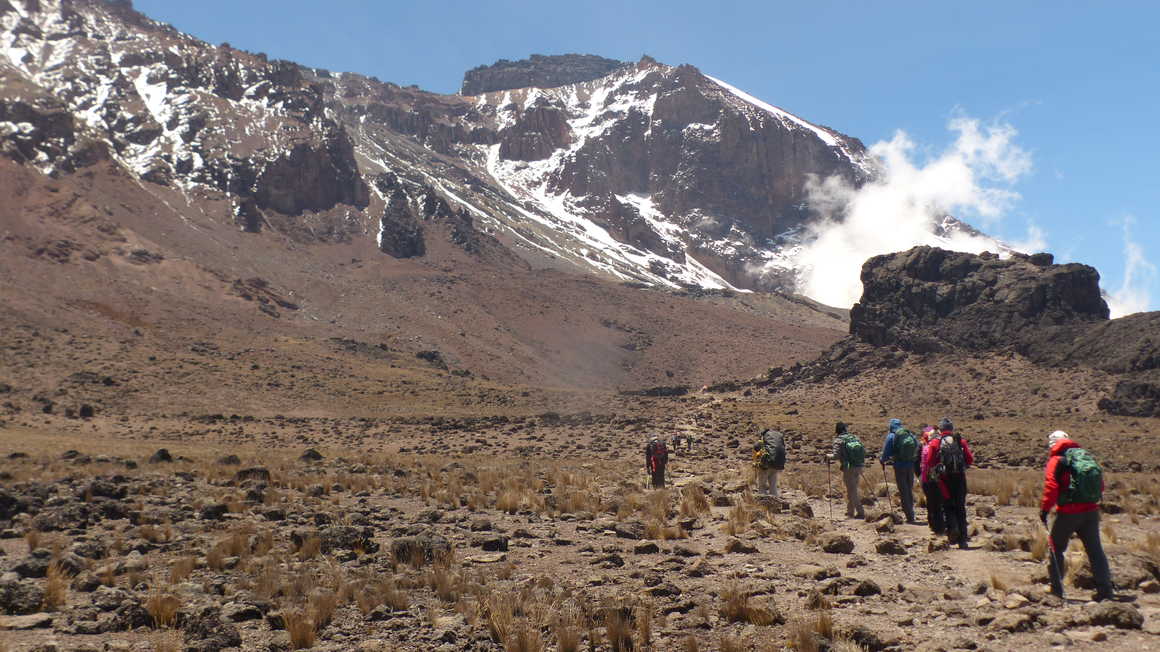
Trek duration: 6-7 days
Trip duration: 9 days
Difficulty: Challenging
Kandoo summit success rating: Over 95%
Accommodation type: Camping
Best route for: low congestion - wildlife
spotting - shortest route
Widely considered as providing one of the easier ascents of
Kilimanjaro, the Rongai route has much to recommend it. This is the
only Kilimanjaro route that approaches the mountain from a northerly direction,
originating near Tanzania’s border with Kenya.
Less easily accessed than the more popular routes that
approach Kilimanjaro from the south, a longer and slightly more expensive
journey is needed to pick up the Rongai route. However, climbers are rewarded
with an ascent that is less prone to wet weather, is less crowded, takes in
spectacular scenery and offers good opportunities to spot Tanzania’s wildlife.
Achievable in six to eight days (longer trips give climbers
a better chance to adapt to the altitude), the Rongai route requires no ropes
and no technical climbing, offering instead a steady, moderately challenging
ascent punctuated with sensibly spaced rest spots and overnight camps.
We rate the Rongai route highly because it gives climbers
the best chance of successfully reaching both Gilman’s Point and going on to
attain the summit, Uhuru Peak, via a long, steady climb rather than a
succession of steep ups and downs.
The only drawback of note for the Rongai Route up
Kilimanjaro is that it is harder to trek high and sleep low. This is the golden
rule of acclimatising to high altitudes. So, whilst this route is great in
terms of a slightly easier ascent, those without experience of altitude are
more at risk of not reaching the summit.
4. The Marangu Route, Kilimanjaro
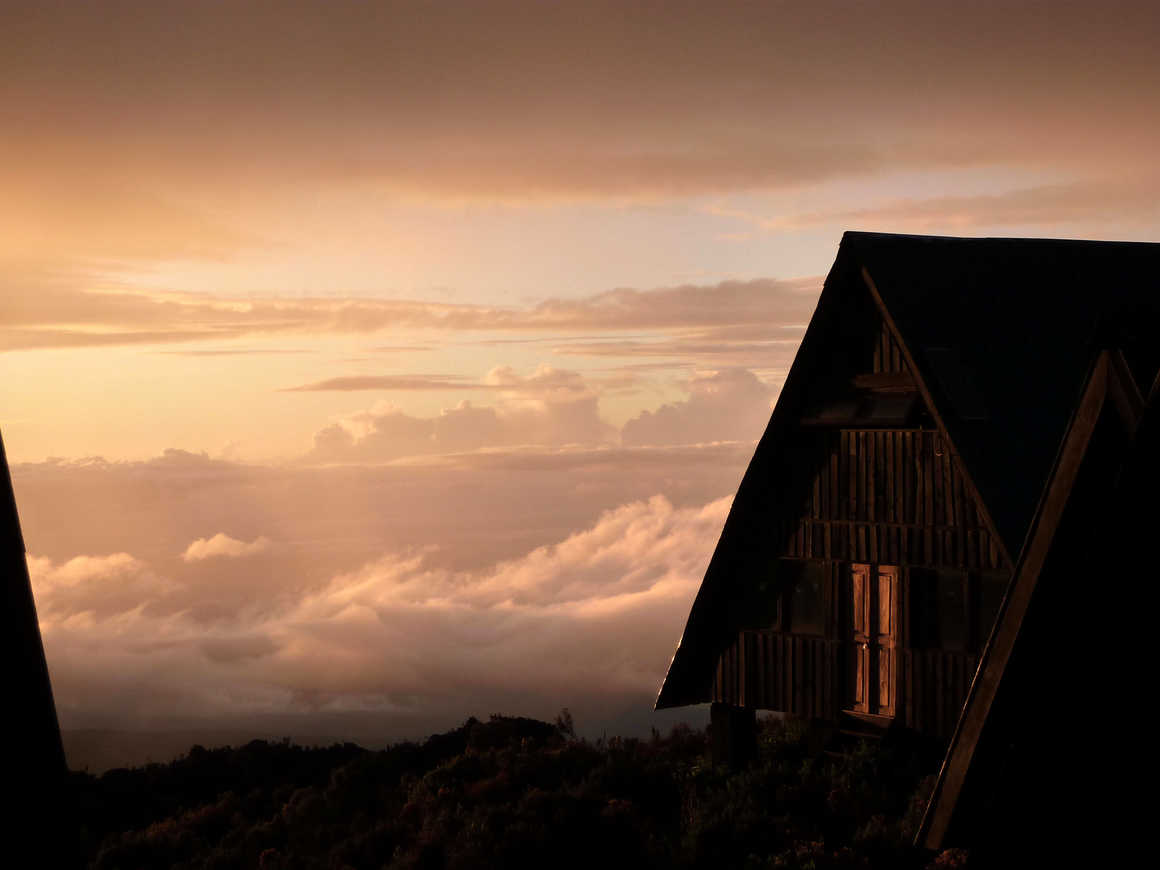
Trip duration: 8 days
Difficulty: Challenging
Kandoo summit success rating: Over 95%
Accommodation type: Camping huts
Best route for: classic route - shorter duration - no
camping
Approaching Kilimanjaro from the southeast, the Marangu route is the original route established to
climb Kilimanjaro. This route is famously known as the “Coca-Cola” route as you
can get a bottle of Coca-Cola at each hut on the trail. Marangu is often billed
as one of the easier Kilimanjaro routes with its gradual and direct path but
suffers from one of the lowest success rates because too many trekkers try to
complete the trail in only 5 days, not allowing for acclimatisation.
For trekkers who do not wish to camp, Marangu is the only
Kilimanjaro route that offers shared dormitory style hut accommodation. The
huts have a communal dining room, simple washrooms and toilets which lower down
the trail will be flushable, but as you move higher up the mountain will be
"long drop" loos. These huts mean the Marangu route is also one of
the best routes to climb Kilimanjaro during the rainy season.
The Marangu route is the only Kilimanjaro route that uses
the same path going up and coming back down. Unfortunately, this means that it
is less scenic than the other routes and it can also get very overcrowded
during the best times to climb Kilimanjaro as traffic is going
in both directions. Still, it is difficult to top the experience this classic
route to Kilimanjaro provides.
5. The Northern Circuit, Kilimanjaro
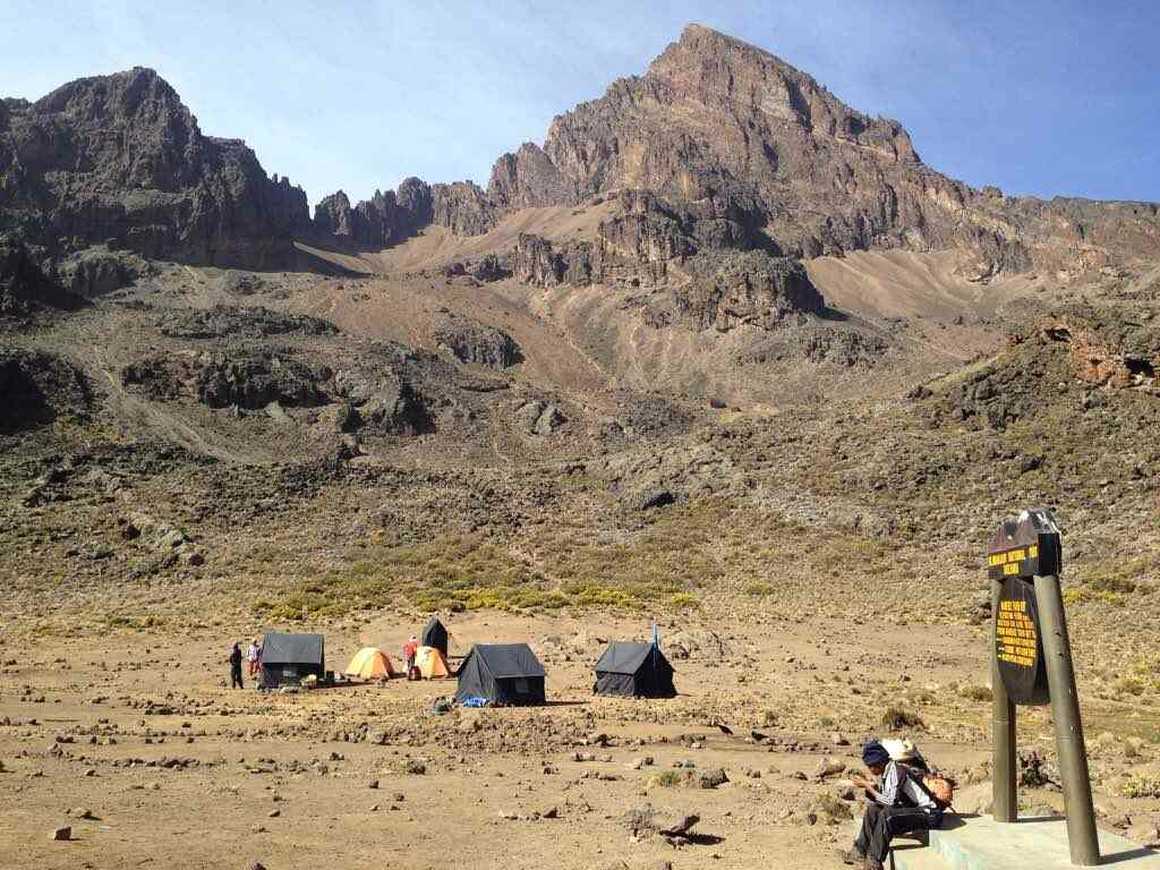
Trip duration: 11 days
Difficulty: Challenging
Kandoo summit success rating: 95%
Accommodation type: Camping
Best route for: remoteness - wildlife
spotting - non-circular route
Beginning at the Londorossi Gate, the Northern Circuit approaches Kilimanjaro from the west
and avoids the crowds on the southern Kilimanjaro routes. The route follows the
Lemosho route, passing through majestic rainforest where some of the region’s
most unique wildlife can often be seen.
The Northern Circuit continues up to the mountain’s third
summit at Shira Ridge. From here, trekkers will cross the Shira plateau and see
the Shira Cathedral before turning onto the little-used northern trails. On a
clear day, views stretch over the Amboseli Plains of Kenya and the trail joins
the Rongai and Marangu routes for the final ascent via Gilman’s Point. After
reaching the summit, the route descends by the Mweka trail, rather than
retracting your steps along the ascent route.
The northern side of Kilimanjaro is much more remote and has
the benefit of less traffic from other trekkers. This Northern Circuit is not
short of beautiful scenery, solitude and potential to spot wildlife, offering a
fantastic combination of all the best elements of the other routes on
Kilimanjaro.
Achievable in 9 days for those who have not trekked much at
high altitudes (experienced trekkers may opt for the 8-day ascent) the Northern
circuit has one of the highest summit success rates. It is considered an easy
route due to its gradual elevation gain and the long time spent on the mountain
allows trekkers a great chance of acclimatising to the altitude.
Other Kilimanjaro Routes
The Shira Route, Kilimanjaro
The Umbwe Route, Kilimanjaro
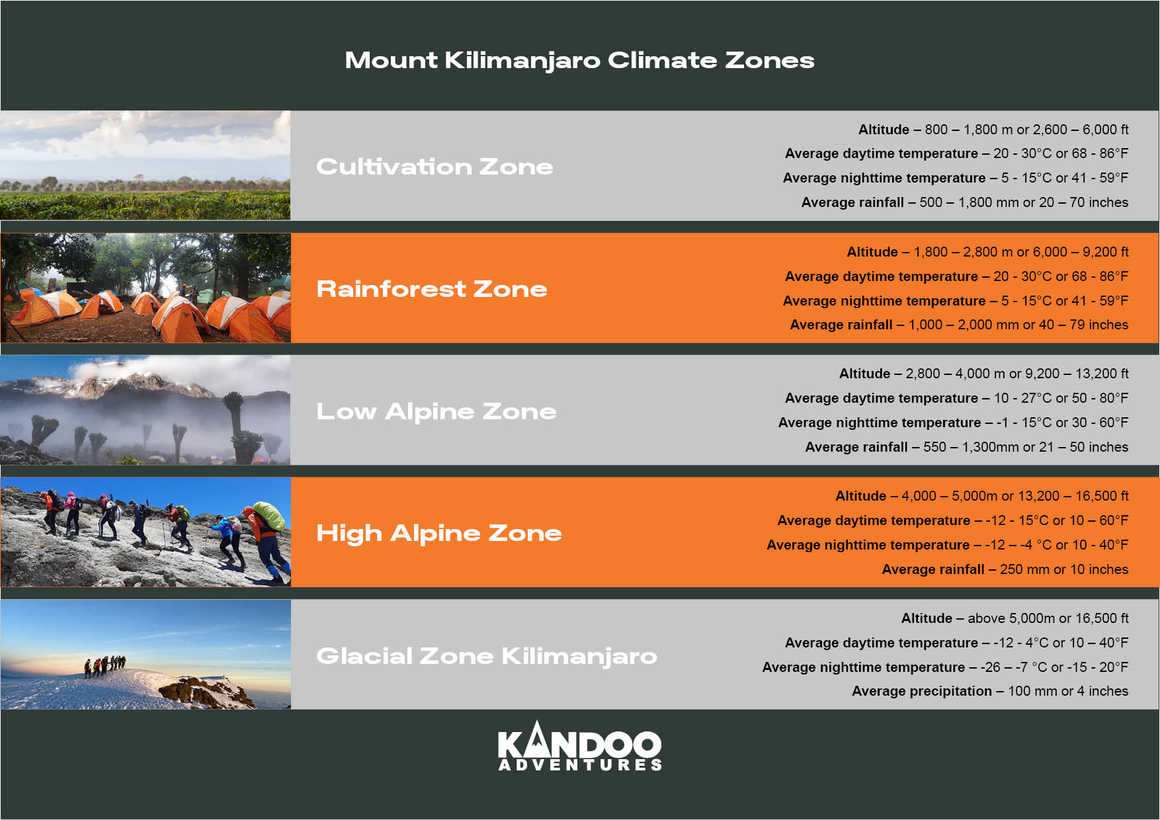
Which is the Best Route to Climb Kilimanjaro?
Whichever Kilimanjaro trek you choose, Kandoo Adventures
have a 98% average success rate across the Kilimanjaro routes we operate and
have some of the best mountain guides in Tanzania, so you can trust you are in
the best hands when you are out there.
Which Kilimanjaro Route has the Highest Success Rate?
Which is the Quietest Route to Climb Kilimanjaro?
How Hard is it to Climb Kilimanjaro?
Kilimanjaro is a fairly difficult trek, but it isn’t a
technical climb. While the trek may not require technical equipment such as
ropes, harnesses and helmets you will need a good level of fitness, stamina,
determination and, most importantly, a positive mindset. Even if you’re
extremely physically fit, you’ll need to be mentally prepared for the challenge
for the best chance of success. If you feel yourself tiring, set small goals
that are easy to achieve and reward yourself with regular breaks. Read our blog
on how
hard is it to climb Kilimanjaro for more information.
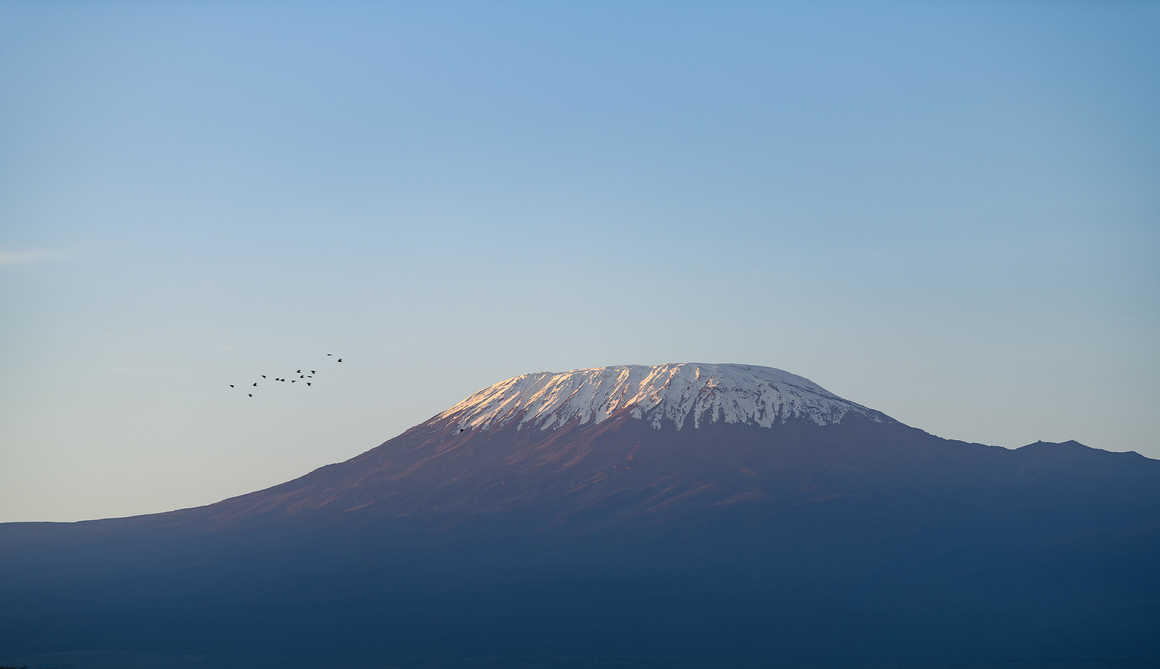
How Much Does It Cost to Climb Kilimanjaro?
Another differentiator in terms of pricing is the trip
duration. There are park fees incurred for every person for each day they spend
inside the park. Those trips that are longer, such as the Northern Circuit and
the Lemosho route will spend longer inside the national park so have more park
fees included, as well as the operational costs that go alongside a longer trek
such as food, water and support staff.
The prices for Kandoo Adventures trips to Kilimanjaro in 2025
are as follows:
- Kilimanjaro Lemosho Route – from £2,499 ($3,099)
- Kilimanjaro Machame Route – from £2,149 ($2,599)
- Kilimanjaro Rongai Route – from £2,299 ($2,855)
- Kilimanjaro Marangu Route – from £1,799 ($2,335)
- Kilimanjaro Northern Circuit – from £2,999 ($3,749)










